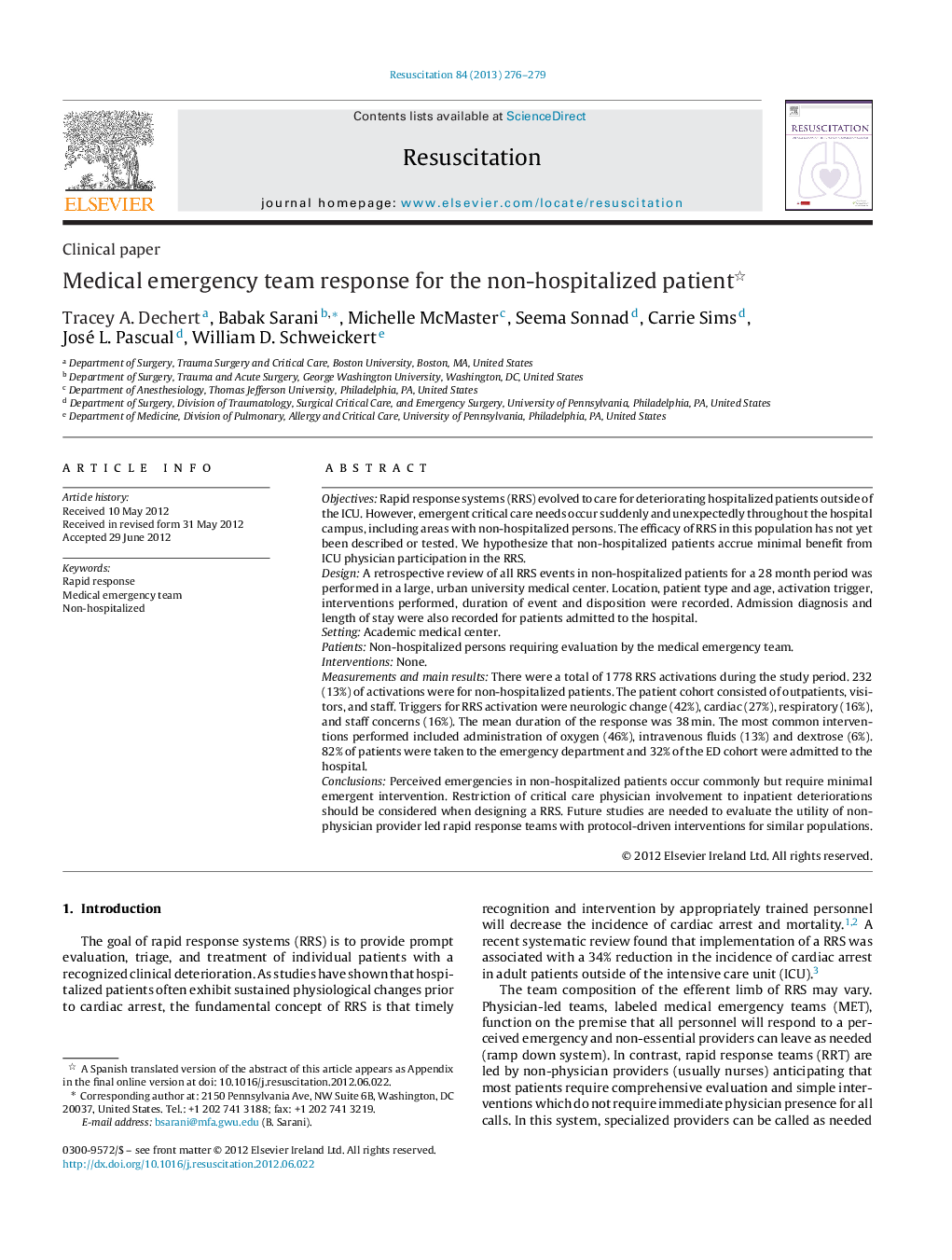| کد مقاله | کد نشریه | سال انتشار | مقاله انگلیسی | نسخه تمام متن |
|---|---|---|---|---|
| 3008767 | 1181465 | 2013 | 4 صفحه PDF | دانلود رایگان |

ObjectivesRapid response systems (RRS) evolved to care for deteriorating hospitalized patients outside of the ICU. However, emergent critical care needs occur suddenly and unexpectedly throughout the hospital campus, including areas with non-hospitalized persons. The efficacy of RRS in this population has not yet been described or tested. We hypothesize that non-hospitalized patients accrue minimal benefit from ICU physician participation in the RRS.DesignA retrospective review of all RRS events in non-hospitalized patients for a 28 month period was performed in a large, urban university medical center. Location, patient type and age, activation trigger, interventions performed, duration of event and disposition were recorded. Admission diagnosis and length of stay were also recorded for patients admitted to the hospital.SettingAcademic medical center.PatientsNon-hospitalized persons requiring evaluation by the medical emergency team.InterventionsNone.Measurements and main resultsThere were a total of 1778 RRS activations during the study period. 232 (13%) of activations were for non-hospitalized patients. The patient cohort consisted of outpatients, visitors, and staff. Triggers for RRS activation were neurologic change (42%), cardiac (27%), respiratory (16%), and staff concerns (16%). The mean duration of the response was 38 min. The most common interventions performed included administration of oxygen (46%), intravenous fluids (13%) and dextrose (6%). 82% of patients were taken to the emergency department and 32% of the ED cohort were admitted to the hospital.ConclusionsPerceived emergencies in non-hospitalized patients occur commonly but require minimal emergent intervention. Restriction of critical care physician involvement to inpatient deteriorations should be considered when designing a RRS. Future studies are needed to evaluate the utility of non-physician provider led rapid response teams with protocol-driven interventions for similar populations.
Journal: Resuscitation - Volume 84, Issue 3, March 2013, Pages 276–279